Our editors independently select these products. Making a purchase through our links may earn Well+Good a commission
The Symbolic Meaning Behind Your Birth Flower, According to Flower Experts
Every month is associated with a birth flower that carries a unique meaning. A gardening pro and flower essence expert reveal each one.
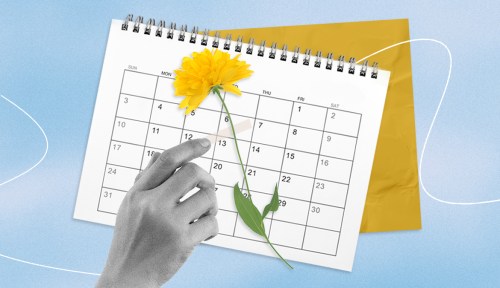
Besides being an official record of when you came into the world, your birthday can function as a marker of your identity and personality. Perhaps you identify with the characteristics of the season or month in which it takes place, or maybe you subscribe to the key traits linked with your astrological birth chart or birthstone. To similar effect, each month is also associated with a particular flower—and knowing your birth month’s flower and its meaning is yet another way to use your birthday as a jumping-off point for introspection.
Experts in This Article
flower essence expert, astrologer, and author of
vice president of product development, design, and sourcing at flower company 1-800-Flowers.com
Though the specific origin of birth flowers is unknown, people in various cultures have assigned meanings to plants and flowers since ancient times. In more recent history, Shakespeare frequently tapped the symbolism of flowers and plants to express particular meaning in his works; according to the Royal Horticultural Society, he mentioned more than 50 different types. For instance, in Hamlet, the play’s heroine Ophelia expresses her grief and distress by distributing specific flowers and herbs, like rosemary, which is associated with remembrance of the dead, and rue, with regret and sorrow.
Floriography, or the language of flowers, especially took off during the Victorian era, when various books and primers outlined all the ways to communicate discreetly through blooms using their associated meanings—for instance, conveying an expression of friendship by way of zinnias or even showing disdain with a bouquet of yellow carnations.
And even today, the symbolic associations of flowers help us express certain feelings, and dictate why some types and colors feel more appropriate for certain occasions than others; for example, you might send a bouquet of red roses to express your love for your S.O. on Valentine’s Day, but you probably wouldn’t send them to someone grieving a loss.
“Flowers [represent] the blossoming potential of [both] the plant and the season.”—Isha Lerner, flower essence expert
By the same token, every birth flower is also linked to a particular meaning, with each pairing reflecting the qualities of the flower and its accompanying season. For example, January’s birth flower is the carnation because this flower is connected with rebirth, and January reflects the start of a new year.
“The beautiful thing about the flowering world is that it reflects the evolution of the seasons, and flowers [represent] the blossoming potential of [both] the plant and the season,” says astrologer and flower essence expert Isha Lerner, author of The Power of Flowers: Healing Body and Soul Through the Art and Mysticism of Nature. Similarly, the meaning of your birth flower is thought to represent both the blossoming potential of your birth month and your soul, says Lerner.
Below, you’ll find detailed insights into each birth flower’s meaning from Lerner and Valerie Ghitelman, vice president of product development, design, and sourcing at flower company 1-800-Flowers.com. Read for your birth month to get a symbolic peak into your roots and your personal growth trajectory.
The meaning of each month’s birth flower, according to flower experts
January: Carnation

While January’s carnation is generally associated with joy, this popular cut flower can come in many colors, each of which also carry different meanings, says Ghitelman. For example, dark red symbolizes love, and white is for good luck and purity.
A hardy plant that can survive and thrive in winter months (like January, naturally), the carnation is also connected to the idea of death and rebirth; in fact, it’s quite a common flower to see at funerals, says Lerner. “It’s a rebirth flower that connects to the dying and the release of the old, and taking on new color and new potential.”
February: Violet
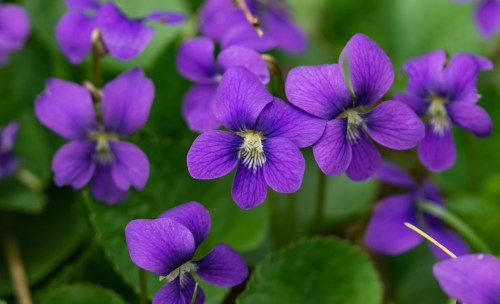
The delicate violet is February’s birth flower, which Ghitelman says symbolizes “faithfulness, truth, and affection.” Thought to be the symbol of ancient Athens and associated with Aphrodite, the Greek goddess of love, violets thrive in the shade and like to grow in clusters. Paired with their heart-shaped leaves and sweet smell, these qualities support their ties with love and affection, says Lerner. And that’s fitting for a birth flower connected to the month of Valentine’s Day.
March: Daffodil

According to Ghitelman, March’s daffodil birth flower aptly represents the changing of the seasons and new beginnings. Grown from a bulb, daffodils are dormant in the winter and are known to push up through the cold ground in early spring—even if there’s snow on the ground. This tendency toward perseverance symbolizes a “radiant sign of hope” even on tough days, just as the flower’s joyful yellow hue represents, in nature, “one of the first signs of spring,” says Lerner.
April: Daisy
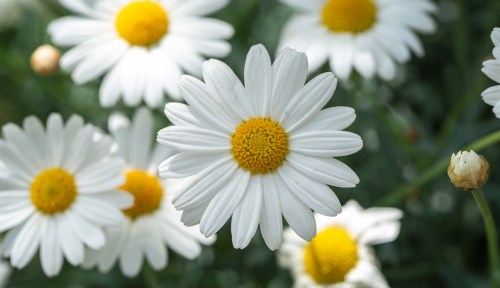
Fitting for the month that is perhaps most strongly associated with spring, April’s birth flower is the vibrant daisy. A flower that symbolizes pure happiness and joy, Ghitelman calls it a “flower that smiles.” The daisy’s large, defined center structure connecting its radiating petals also symbolizes focus, says Lerner, which may be essential to retain before the full-blown freedom of summer kicks in.
May: Lily of the valley
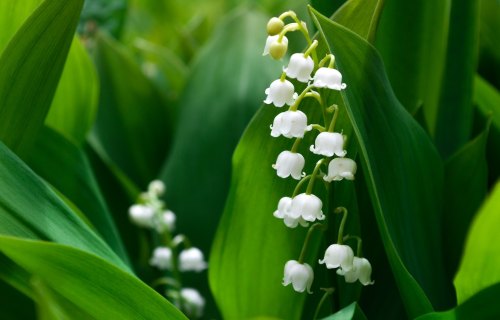
May’s flower is the lily of the valley, a perennial with white bell-shaped petals. It symbolizes purity and virtue, says Ghitelman. A common ground cover, lily of the valley’s pronounced scent is sweet and lively—which makes sense for the month that follows April showers with, well, May flowers. “Its [decorative] leaves and powerful rooted energy allow it to grow in big, dense clumps, so it brings this grounded kind of sweetness,” adds Lerner.
June: Rose
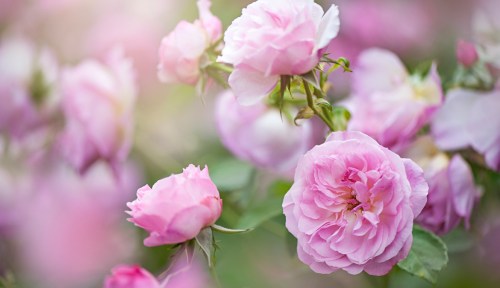
June’s birth flower is the rose, the perennial known for its stunning petals and sharp thorns. While roses come in numerous varieties and colors, many of which have their own specific meanings (for example, red roses are thought to symbolize passion), according to Ghitelman, roses generally reflect love and beauty of the deepest magnitude.
After all, there’s a reason you might reserve the gift of roses for just your closest loved ones. “The essence of the rose is really about building a strong foundation of love,” says Lerner, largely because these plants are notoriously tough to uproot once planted.
July: Larkspur

As bright and vivacious as the heat of summer itself, July’s birth flower is the larkspur. The colorful flower’s spiked petals grow on vertical stalks, pointing up and out toward the sun, and as a result, it’s thought to symbolize positivity, says Ghitelman. Also called delphinium, “larkspur is just pure happiness,” says Lerner.
August: Gladiolus
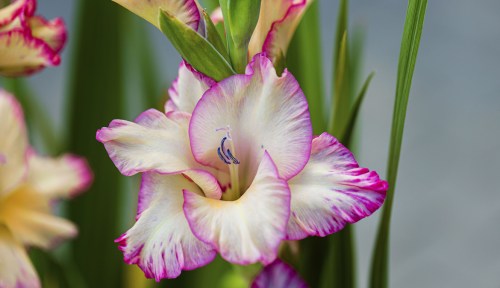
August’s birth flower is the gladiolus, which Ghitelman says symbolizes honor, remembrance, and strength of character—all qualities necessary to tide us over from carefree summer into the more austere autumn to come. Also known as the sword lily, the gladiolus stands tall and firm like the strength it embodies. Each shade in its rainbow of varieties also carries an additional meaning, adds Ghitelman; for example, red classically represents love, while yellow signifies compassion.
September: Aster
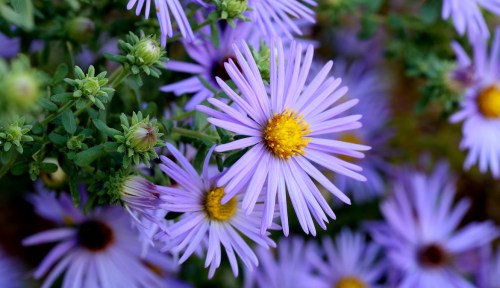
September’s birth flower is the aster, a purple flower in the daisy family whose petals signify daintiness, luck, and love, says Ghitelman. Named after the Greek word for “star,” the aster blooms in the fall and is connected with a shifting of the seasons. Alongside its celestial name, its star-like pattern of petals makes it “feel cosmic, like it’s connecting us to a higher faith and potential,” says Lerner—much like the fresh, back-to-school feeling of September.
October: Calendula
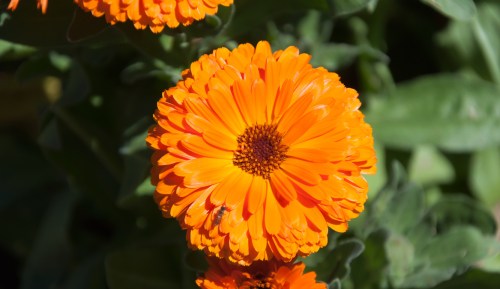
October’s birth flower is the calendula (aka pot marigold), which symbolizes unconditional love, personal strength, and tenacity, says Ghitelman. It blooms in yellow, orange, and gold—seasonal hues for October—and has edible petals. Native to the Mediterranean, the calendula also has a long history of medicinal use and is often used topically to treat wounds, which speaks to its symbolic connection with healing and resilience.
November: Chrysanthemum

November’s birth flower is the chrysanthemum, which symbolizes hope, longevity, and optimism, says Ghitelman. These are also the qualities necessary to power through the long winter ahead of this month.
Alternatively called the mum, the chrysanthemum is aptly a symbol of fall and is often displayed in large bunches or in pots to mark the season. Given its centuries-old use in healing and herbal medicine (particularly in its native Asia), the chrysanthemum is also traditionally associated with wisdom and nobility.
December: Narcissus

December’s birth flower is the paperwhite narcissus (which is part of the same Narcissus genus as the daffodil). The annual bulb typically flowers for a short time in late winter and early spring and produces white, fragrant flowers that “symbolize honor, kindness, and prosperity,” says Ghitelman, all qualities “we wish for friends and family as they enter a new year.”
The name and meaning of the plant can be traced to the Greek myth about Narcissus, a son of the gods who met his end as a result of his obsession with his own reflection in a pool of water; it’s said that a flower grew where he died, which would later spawn what we know as the Narcissus genus of florals. In turn, Lerner says the paperwhite narcissus also symbolizes reflection, given both its ties to the myth and assignment as the birth flower for the final month of the year.
Sign Up for Our Daily Newsletter
Get all the latest in wellness, trends, food, fitness, beauty, and more delivered right to your inbox.
Got it, you've been added to our email list.
I Love to Clean—but When I Can’t Do It Myself, This Is the Home Cleaning Service I Trust
No time to clean? No problem. Homeaglow's network of home cleaning professionals have you covered.

An Island Escape Taught Me That True Balance Lives Between Quiet Moments and Bold Exploration

I’m a Digital Nomad, and This Is the Illness-Fighting Supplement I Always Travel With
Because the only thing I want to catch while traveling is a beautiful view.

These Are the Only Sandals I’d Dare to Wear on a New York Sidewalk
My go-to kicks are made for the trail, but they stand up to city grime and keep my feet cool all day.

The Island Vibes at This Ibiza Hotel Reminded Me to Prioritize Joy, Even When I’m Not Feeling It
And I'm already patiently waiting for my next trip back.




